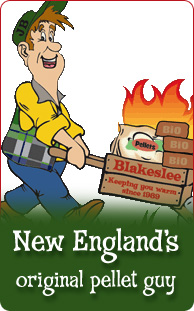Why the Wood Pellet Industry Is Growing
According to a New York Times article last month, European demand for biomass pellets is fueling growth in the North American wood pellet industry. The British publication The Timber Trades Journal said the sector grew "six-fold from a capacity of just over one million tons to more than six million tons in the last five years."
The Timber Trades Journal article said the U.S. South, with its abundant forests, is expected to become the leading wood-pellet region in North America. The New York Times mentioned Arkansas-based NexGen Biomass, a start-up planning to build a 150-employee plant capable of producing 440,000 tons of wood pellets annually. NexGen Biomass officials stated that pine pulpwood will be converted into wood pellets for use as fuel in Europe.
Phoenix Renewable Energy began to build a $110 million pellet processing plant in Arkansas in August. The plant is located on the site of a former paper mill. The company plans to build four more plants in Arkansas.
Sam Anderson, CEO of Phoenix Renewable Energy, credits the Obama administration and the European Union's cap-and-trade program for making the plant a "practical idea." "I believe if it were not for the Obama administration's stimulus plan (and) concept of a new economy, the business we're about to engage in would not be possible," he said.
Are wood pellets environmentally friendly?
An April Treehugger.com article said that if produced in "environmentally sustainable ways and used efficiently," biomass can reduce greenhouse gas (GHG) emissions by up to 98 percent compared to coal. However, the article pointed out that the emissions are higher than those of natural gas if biomass is not used efficiently and not from environmentally sustainable sources.
A British group, AEA for the Environment, reported that GHG emissions from energy produced by biomass are "generally, but not always, less than fossil fuels." According to the report, land use "can negate any emission savings."
International standards that verify biomass pellets come from sustainable sources do not exist yet. The British start-up Pellet Zone Ltd. (PZL), which recently launched an international trading service to bring biomass producers and power plants together, uses the third-party verification specialist SGS to verify that the pellets it trades in are from "sustainable renewable sources." Pellets must meet the following criteria:
- Not result in a net release of carbon from the vegetation and the soil
- Not jeopardize food supply or communities where biomass is essential for subsistence
- Not adversely affect protected or vulnerable biodiversity
- Reduce greenhouse gas emissions
- Enhance, protect, and improve soil, air, and water quality
- Improve the local prosperity and well-being of employees and the local population where biomass is produced
- Heating with wood pellets
Wood pellet stoves are about 80 to 85 percent efficient and produce very little ash. However, while they work well and users can avoid the headache of splitting wood, they do require electricity to run a small motor and an auger that feeds the pellets into the stove. Therefore, users who are off the grid need a power source. On the other hand, urban users may be limited by laws in some cities that prohibit pellet stoves when air quality is poor.





